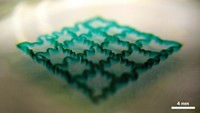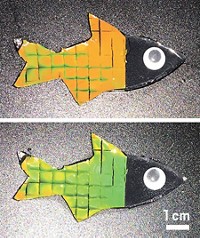Advertisement
Grab your lab coat. Let's get started
Welcome!
Welcome!
Create an account below to get 6 C&EN articles per month, receive newsletters and more - all free.
It seems this is your first time logging in online. Please enter the following information to continue.
As an ACS member you automatically get access to this site. All we need is few more details to create your reading experience.
Not you? Sign in with a different account.
Not you? Sign in with a different account.
ERROR 1
ERROR 1
ERROR 2
ERROR 2
ERROR 2
ERROR 2
ERROR 2
Password and Confirm password must match.
If you have an ACS member number, please enter it here so we can link this account to your membership. (optional)
ERROR 2
ACS values your privacy. By submitting your information, you are gaining access to C&EN and subscribing to our weekly newsletter. We use the information you provide to make your reading experience better, and we will never sell your data to third party members.
Materials
Electric eel inspires soft power source
Stacked miniature hydrogel compartments generate electricity via ion gradient
by Bethany Halford
December 18, 2017
| A version of this story appeared in
Volume 95, Issue 49

The knifefish Electrophorus electricus, better known as the electric eel, can generate electricity to stun its prey thanks to specialized organs that generate power via ion flux—no batteries required. The structure of these organs provided a jolt of inspiration to researchers led by Michael Mayer of the Adolphe Merkle Institute at the University of Fribourg, who wanted to create a soft power source. The electric eel’s organs contain thousands of alternating compartments containing either potassium or sodium ions separated by membranes that keep the ions apart. When the knifefish charges up, the membranes let the ions flow, creating a burst of power. To create ion gradients in their system, Mayer and colleagues used three-dimensional printing to pattern a substrate with alternating spots of hydrogels loaded with either sodium chloride or pure water (shown in red and blue, respectively). On a different substrate, they dotted cation-selective and anion-selective hydrogels (shown in green and yellow, respectively). When overlaid, the system of dots creates a conductive pathway that can generate up to 110 V (Nature 2017, DOI: 10.1038/nature24670). The researchers note that because the materials are biocompatible, they have the potential to power implantable medical devices, such as pacemakers. “To get there, we are looking for talented Ph.D. students and postdocs,” Mayer says.





Join the conversation
Contact the reporter
Submit a Letter to the Editor for publication
Engage with us on Twitter